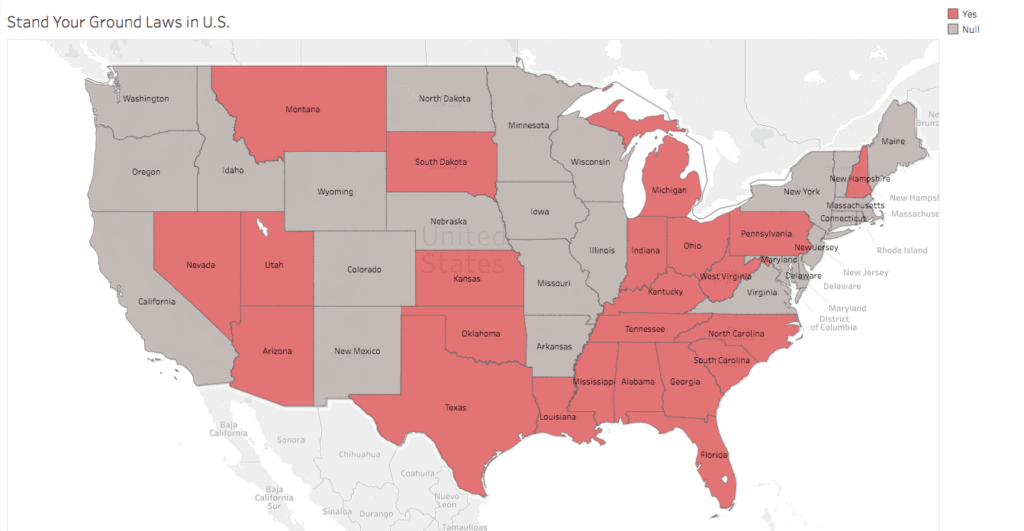Comparing Crime Rates and Self-Defense Laws in Texas and California
Safety Across Large States
Texas and California are two of the largest and most populous states in the US. Texas has a population of over 29 million spread across 268,000 square miles, while California is home to 39 million residents within 164,000 square miles. With their substantial geographical size and populations, both states encompass a wide range of environments - from urban to rural, wealthy to impoverished. As a result, crime levels vary significantly between different cities and regions within each state. Some areas have high violent crime rates, while others enjoy low rates of violence and property offenses. Overall, the average crime rates in Texas and California tend to fluctuate, with each state sometimes ranking higher or lower than the other depending on the year.

Variation in City-Level Crime
Within the states, certain cities stand out as having particularly high or low crime statistics. In California, cities like Oakland and Stockton consistently report elevated violent and property crimes. Meanwhile, San Diego and Irvine typically rank among the safest cities nationwide based on their per capita crime rates. Texas also shows urban disparities, with parts of cities like Houston facing public safety challenges, while suburbs such as Plano and McKinney experience little violent criminal activity. Overall, crime is concentrated in specific neighborhoods rather than uniformly impacting entire cities or metropolitan areas. Safe and unsafe areas can exist side by side.
Differences in Self-Defense Laws
While average crime rates may fluctuate between the two populous states, a key divergence lies in their approaches to self-defense and protecting one’s home or property. California has implemented several restrictions on when and how homeowners can use force against intruders. Residents are only legally permitted to draw or display a weapon if they have clear evidence the intruder is also armed. This limitation prevents residents from fully defending themselves until threatened with harm. By contrast, Texas self-defense laws empower homeowners to protect their castles. Lone Star State citizens can meet force with equal force, including deadly retaliation, against unwanted intruders - no questions asked about the intruder being armed first.
Advantages of Strong Self-Defense Protections
Supporters argue the Texas self-defense statute provides a valuable deterrent against criminal behavior targeting households. Criminals know unlawful entry could prompt an armed response from the home’s occupants. This knowledge may discourage some acts of trespassing, burglary or home invasion from occurring in the first place. Moreover, victims are not placed in vulnerable, legally gray positions should an unexpected confrontation arise during a break-in. Texas residents can immediately focus on survival rather than weighing restrictions during a frightening home invasion scenario. Empowering law-abiding citizens through robust self-defense rights may do more to curb victimization than stricter limitations, according to Second Amendment advocates.
Risks of Overly Restraining Self-Defense
Conversely, California’s constrained self-defense provisions could unintentionally empower violent offenders by tying the hands of would-be victims. Waiting until an intruder demonstrates their own weapons possession leaves residents at the mercy of faster-acting assailants. Criminals gain a strategic advantage knowing they must only threaten harm, not necessarily cause it, to avoid armed resistance. The ability to lawfully meet violence with counteracting force acts as a sobering equalizer that deters aggression. Removing that certainty of consequences could render some Californians sitting ducks vulnerable to harm based solely on an intruder’s whims. Supporters argue loosening restrictions in line with Texas would make the Golden State safer for law-abiding citizens defending hearth and home.
Preference for Stronger Self-Defense Protections
After living in both Texas and California, the author of this article prefers the Lone Star State’s approach to self-defense and property rights. While not dismissing variances in average crime rates between the population powerhouses, guarantees of armed self-defense offer a margin of safety beyond statistics alone. Criminals consider deterrence, not just statistics, when selecting targets. Strict limitations may curb fearful reactions after the fact but do little preemptively. Empowering good Samaritans to confront threats without unjustified handicaps protects the righteous more prudently than villains. Overall, a balance of responsible gun ownership and resolute self-defense protections cultivates an environment where law-abiding citizens need not live anxiously as subjects of criminal whims.
Conclusion
As two highly populated states with diverse urban and rural landscapes, both Texas and California contend with fluctuating crime rates influenced by socioeconomic factors beyond borders or laws. However, approaches to self-defense reveal principled differences in priorities that impact security on an individual level. Robust self-defense statutes acknowledge citizens’ natural right and duty to protect their families, property and lives without hampering restrictions. While no place is crime-proof, a policy respecting armed self-determination promotes safety and accountability far beyond statistics alone.
